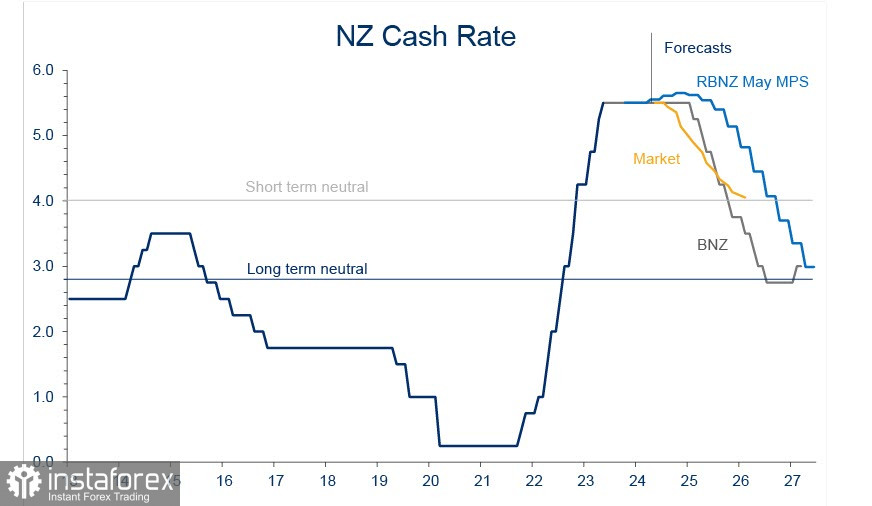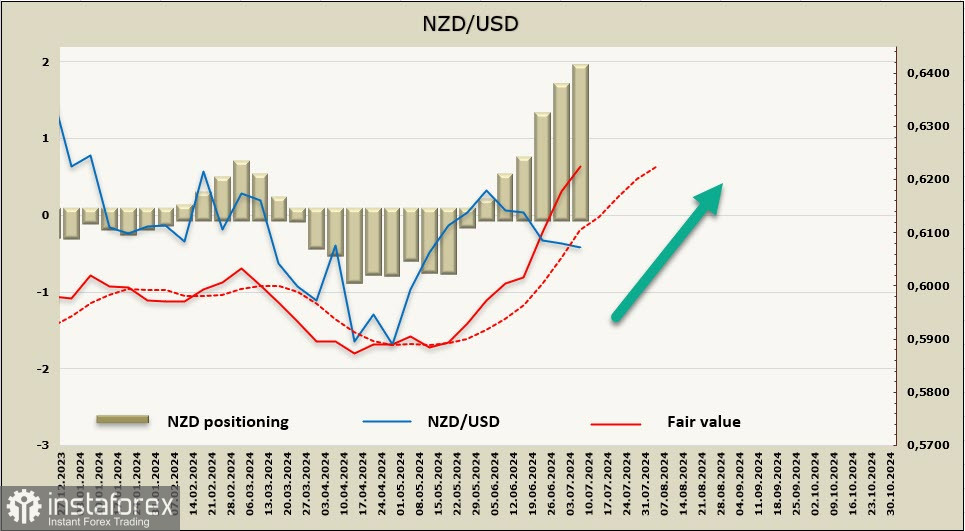The Reserve Bank of New Zealand decided to leave rates unchanged at the meeting that ended overnight, but made a clear dovish pivot that sent NZD/USD lower.
The restrictive monetary policy has significantly reduced consumer price inflation, the Committee said in a statement that differs significantly from what the RBNZ said six weeks ago, when it merely noted progress on inflation. Now, the RBNZ expects inflation to return to within the 1-3% target range in the second half of this year. Regarding the current policy, the RBNZ confirmed that it will remain restrictive but acknowledged that it may reduce the degree of monetary tightening in line with expected inflationary pressures. Since price stability is the main criterion for the RBNZ, this statement essentially means they are ready to lower rates if they see a decline in inflation.
This also means that the RBNZ could start cutting rates as early as August if the quarterly inflation report, which will be published next Wednesday, turns out positive. The market already sees a 60% chance of a rate cut at the August 14 meeting, compared to the fact that the RBNZ itself saw the probability of a rate hike back in May and planned to start cutting rates only in 2025.

But there is another explanation for the RBNZ's dovish tone - the Bank may fear a sharp appreciation of the kiwi if the market starts to play out the Fed rate forecasts after a weak employment report. A sharp rise in the currency's value is not in the government's interest right now, as the economy is clearly slowing down, and a strong New Zealand dollar would add more strain on export-oriented businesses.
Positioning on the NZD has been shifting towards a strongly bullish stance for the seventh consecutive week, with the net long position reaching a 5-year high. The price is above the long-term average, and the pair's growth shows no signs of slowing down.

The kiwi failed to reach the resistance area of 0.6170/80, as it was pulled down by the central bank's softer-than-expected comments. However, we assume that the correction will not be deep, with support at 0.6040. If the kiwi holds above this level, it has a good chance of resuming the upward movement. We expect growth to resume in the near term, with a long-term target at the December 2023 high of 0.6365.
 English
English 
 Русский
Русский Bahasa Indonesia
Bahasa Indonesia Bahasa Malay
Bahasa Malay ไทย
ไทย Español
Español Deutsch
Deutsch Български
Български Français
Français Tiếng Việt
Tiếng Việt 中文
中文 বাংলা
বাংলা हिन्दी
हिन्दी Čeština
Čeština Українська
Українська Română
Română

